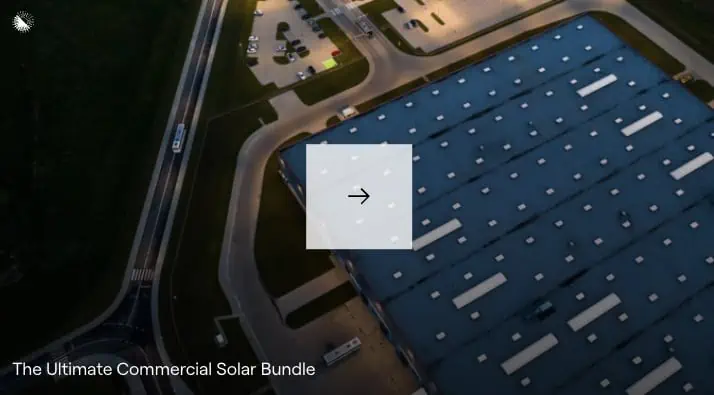Federal opportunity zones, which offer tax benefits to qualifying businesses, are little known and not always well understood. But they can offer important advantages to solar companies, adding to solar tax benefits such as the Federal Investment Tax Credit (ITC).
“Opportunity zones were created to promote economic development in low-income communities by allowing companies to defer capital gains taxes,” said Roman Petra, attorney for Nelson Mullins who specializes in commercial real estate transactions.
“The zones offer tremendous value for solar,” said Jim Spano, a managing partner of Spano Partner Holdings, who has been involved in the development of more than 300 megawatts (MW) of solar. “Having a tax break in areas where economics don’t support solar can provide lower cost of capital and opportunities for projects to pencil out.”

Pairing solar benefits with opportunity zone benefits
Jeff Just, co-founder, along with Spano, of RadiantREIT, which provides financing for solar projects, added that locating a solar installation in an opportunity zone allows businesses to double dip on tax benefits.
“They get all the benefits of the zone — including permanent exclusion of future capital gains — while keeping all the tax benefits of solar… There are no limitations on pairing these two opportunities,” he said.
How do opportunity zones work?
Developers who invest in economically distressed communities through the program are given three tax incentives: temporary deferral, step-up in basis, and permanent exclusion of capital gains.
With temporary deferral, investors can defer tax on prior capital gains reinvested in a Qualified Opportunity Zone. Investors also receive a step-up in basis for capital gains reinvested in a Qualified Opportunity Zone.
A higher basis means lower capital gains. Under the program, the basis steps up by 10% if the investment is held for at least five years, and by an additional 5% if held for at least seven years.
The third incentive, permanent exclusion, says that if held for at least ten years, capital gains from the sale or exchange of an investment in an Opportunity Zone may be permanently excluded from capital income.
Creating a qualified opportunity zone fund
To qualify for the Opportunity Zones program, investors must establish a Qualified Opportunity Zone Fund. This fund holds Qualified Opportunity Zone property.
Many different types of taxpayers can establish an opportunity fund, including corporations, partnerships, limited liability companies, and individuals.
Different segments of the solar industry can take advantage of opportunity zones, including solar equipment manufacturers that produce panels, inverters, batteries, battery charge controllers and components, and equipment that moves DC energy produced by solar panels for conversion into AC electricity, said Petra. Solar installers and solar farms also qualify.
It’s important to understand where the zones are located — and identify whether a solar business can take advantage of the zones, said Spano.
The importance of consulting an attorney
“As business people, we look at the definition of opportunity zones in geographic areas and the qualification requirements of the business,” he said. Because it’s not always easy to determine whether a business qualifies for the benefits, his company always consults attorneys. “Our attorneys advise us about how to present our applications for qualification,” he said.
The eligible tracts for the zones are based on economic indicators of median family income and poverty, said Petra. States are limited to establishing zones in 25% of their low-income communities. In other words, if a state has less than 100 tracts identified as low-income communities, 25 qualify, he explained. The tracts are chosen based on statistics from the U.S. Census.
Consider focusing on Puerto Rico
Puerto Rico — which has been rebuilding its energy infrastructure in the wake of the devastation of Hurricane Maria — received special treatment, with 835 of 945 low-income tracts qualifying as opportunity zones.
“Of particular interest should be Puerto Rico, which after Hurricane Maria has made a concerted effort to promote alternative energy, especially solar energy,” said Petra.
Last year, the U.S. Department of Treasury certified over 8,700 individual census tracts as Qualified Opportunity Zones in 50 states, six territories and the District of Columbia, he said. About 35 million people live in these zones, which are established for 10 years.
Look for opportunity zones in rural areas
“Most solar energy developments located in opportunity zones should qualify,” said Petra. He added that “Developers should consider rural areas, where over 23% of census tracts are located and land tends to be more available and cheaper.” Solar developers should also consider opportunity zones in the states with the most sunshine, he noted.
In order to qualify for the tax benefits, a Qualified Opportunity Fund must invest in a Qualified Opportunity Zone Business. A Qualified Opportunity Zone Business must be a trade or business in which substantially all (70%) of the tangible property is owned or leased in a Qualified Opportunity Zone, said Petra.
Fifty percent or more of the business’s total gross income must come from actively doing business in the Qualified Opportunity Zone. And at least 40% of the company’s intangible property must be actively used in a Qualified Opportunity Zone. Intangible property includes non-material assets such as bank accounts, copyrights, stocks, patents, bonds, insurance policies, retirement benefit accounts, plus customer lists or trade secrets, all of which have a dollar value.
Petra notes that the location of the business is especially important to qualifying for an enterprise zone. “The focus is on the location of the business, but a Qualified Opportunity Zone Business must meet other tests,” including the requirement that the company must derive 50% of its gross income doing business in the Qualified Opportunity Zone,” he said.
It’s important for solar businesses looking at the program to understand what’s needed to qualify as an Opportunity Zone Business, he said. Spano agreed, noting that the zones can be confusing, so it’s important to work with attorneys.
Solar opportunities with the ITC
The Investment Tax Credit (ITC) is a US federal tax credit for those who adopt solar in all states within the US, including residential and commercial properties. This credit was an excellent incentive for many solar prospects to adopt solar. Initially, the ITC was scheduled to be reduced to 22% in 2023 and then disappear altogether for homeowners in 2024.
But as of Aug 16, 2022, the government passed the Inflation Reduction Act (IRA), which increased the tax credit to 30% and extended the expiration of the ITC for 10 years.
“The final benefit of the Qualified Opportunity Zones program is if the investor holds the investment for more than 10 years, any subsequent gain recognized escapes federal tax entirely,” said Petra. (It is important to note, however, that a state may not follow the federal law and may tax the gain.) Overall, the tax benefits available to investors should translate to long-term, cheaper capital, he said.
To date, most of the qualifying transactions in the zones have been in real estate, said Petra. “Generally, real estate projects are well suited… but as folks have gotten more comfortable with the program, other industries [like solar] have gained interest in the program.”

